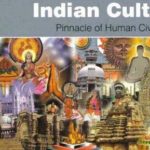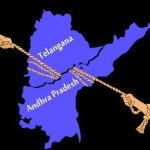Sarv Agamanam Acara |Prathama Parikalpate
Acara Prabhavo Dharmo |Dharmasya Prabhur Achyutaha
In the Vishnu Sahasranama, it is stated that “Achara leads to Dharma, and Dharma is the path to Krishna”. As such, individuals must first master good conduct as the stepping stone to understanding and embodying righteousness.
Indians (and our globe-trotting Andhras are no exception) have managed to give themselves a bad name internationally. Indian culture’s popularity, through yoga, bollywood, and cuisine, is at an all time high, but the popularity of Indians and India are beginning to approach a low. Much of this obviously due to bad press (some deserved, and quite a bit unfair)—
this blog post will thus focus on the part that is deserved
—and discuss ways you can do things about it. That’s right, I’m talking to YOU—currently lounging on the sofa or somewhere else, in between generous helpings of hakka noodles and God knows what else. And the way you can tackle it is through Achara (pronounced “Aachaara”).
The beauty of Achara is that 1/3 of India’s problems can be solved if India’s citizens follow it, another 1/3 can be solved if they follow Bharatiya Dharma (patriotic/national duty), and another 1/3 through good leadership and administration.
Of late, there has been some misunderstanding about Achara. The Manusmriti is often selectively cited to emphasize that Achara is somehow the highest Dharma coming before anything and everything—but such people represent a flawed understanding. They hide behind this to justify their emphasis of kalpya or ritual aspects of Achara, as though Purva Mimamsa were the only and highest darsana (philosophical view). But this is not the case, and it is certainly not Vedanta, which the Gita embodies.
Achara is not the highest dharma—how could it be? Was it Acharam for Yudhisthira to say “Ashvathama attaha…kunjaraha”? Was it Acharam for Bharata to angrily scold his mother for her conspiracy against Rama and disown her? Was it Acharam for Dhristadyumna to kill a learned Brahmin like Drona?
No, of course it wasn’t—but it was Dharmam, because all these actions were intended to ensure that Dharma and Rta (the cosmic/just order) were protected. Krishna made Yudhisthira speak a lie because Drona could not be defeated in battle and had to be removed to ensure the victory of the righteous Pandavas over the evil Kauravas. Bharata had to scold his mother and even disobey and disown her so she would come to her senses for the sin she had committed by overturning Rama’s birthright as firstborn heir to the throne. It was appropriate for Dhristadyumna to kill Drona, because Drona had taken up arms and sided with Adharma, thus neither his status as a learned brahmin nor his identity as beloved guru of Arjuna could be allowed to protect him from the consequences of his actions. Thus in all these cases, Achara was broken, but Dharma was protected.
What then is the highest dharma, you ask?—Sacrifice.
No, not Yajna (that’s a different type of sacrifice)—but Tyaga (which is self-sacrifice).
Don’t get me wrong. Achara is very important. In fact, it is the building block of Dharma. The foundation that allows individuals to grow ethically and then morally, and allows societies to have a stable and just order. But Achara has, all too often, been an excuse for some sections to get lost in mindless ritual. Ritual without reflection is mere robotics.

Sri Ramana Maharshi asked of what use it was to be a lettered man if it means merely a becoming a gramophone—mindlessly and brainlessly chanting mantras and performing yajnas without improving himself. Developing Atma-vichara (self-reflection) and Viveka (ability to discriminate between right and wrong) is thus the critical first step to liberation from samsara.
Our own people, of course, stupidly gas their heads up with the hot air of caste pride and pompously ask “which dharma?”. But regardless of age, such buffoons are nothing more than spiritual children in aged bodies.
Why do we say “Aham Brahmasmin” rather than have each individual chant varna (caste) over and over? This is because one’s birth, body, and even caste, is temporary—fleeting. At the end of each life, our merits and demerits determine the nature and birth status of future lives—and those who misbehave today could find themselves taking birth as even animals.
Thus, while varnashrama dharma historically has had a place in guiding one’s duty to society, Sanatana dharma at its highest levels is about the essentials of morality. These are the divine qualities, or gunas, of Pavitrata (purity), Karuna (compassion), Saamyama (self-control ), Yuktata (justice), Satya (truth), Tyaga (self-sacrifice) and above of all Bhakti/Prema (Divine love). This Prema is what makes possible love for the rest of society and willingness to engage in Tyag to safeguard it. This is because if the Tyagi is willing to even sacrifice himself for a greater cause, then he is willing to restrain his pleasures to avoid hurting others.
It was Bharata’s brotherly love for Rama that made him sacrifice not only only the ill-gotten Throne that had come to him, but also willing to sacrifice his own life to ensure the Kingship of Ayodhya was Rama’s alone. He even refused to crown himself, and took up residence as a hermit-ruler at Nandigram rather than from the palace at Ayodhya. This is because, pleasure without conscience is one of the greatest dangers for the souls of men and women. And Tyag is, thus, one of our highest ideals—and the highest Dharma.
This self-sacrifice is not the mindless behavior of lemmings—giving themselves up for the slightest cause (or as masquerade for atma-hatya)—but rather a studied, difficult, and frequently reluctant one. This is because it weighs the interests of the individual against the needs of society. In fact, the most brilliant and insightful dialogue in the arbitration comes from Rajarishi Janaka himself, who says “it is easy to to die, but it is often harder to live for your loved ones”. Thus, it is critical that individuals properly study dharma to understand when the former or latter is more appropriate.
The famous story of Maharishi Dadhichi is an example.
The King of the Devas, Indra, was once defeated by the Vritrasura and pushed out of Heaven (Svarga). The demon Vritra had been given a boon that prevented him from being killed by any weapon then in existence—especially one made from wood and metal.
Indra went to Lord Vishnu in despondency, and Vishnu told him that it was possible to defeat Vritra, but such a weapon could only be made from the bones of Sage Dadhichi. Indra went to Dadhichi’s ashram in Naimisharanya and asked if the Sage would be willing to grant the Devas his bones to restore Dharma. Dadhichi selflessly gave up his life so that a weapon—the Vajra— could be fashioned from his bones to defeat the Asuras. This is an example of Tyaga, self-sacrifice for the need of society.
So what then is Achara?
People think that it is great evil that begets the horrors and disasters of the world, but the reality is that it is the little evils, the petty injustices that occur so frequently that aggregate over time and cause destruction.
It is the dismissive cavalier remark that breeds resentment. It is the mean-spirited mockery that builds hatred. It is the thoughtless messiness that causes disgust. Because most people seek to avoid conflict, the frustration that brews from such incidents is typically not blown off at appropriate intervals, but all at once, in a disproportionate and destructive display. That is why the 4 main elements of Achara should be observed.
1. Maryada/Saujanya (propriety/etiquette/courtesy) *Rama was called “Maryada Purushottam” for precisely this reason
- Polite and Proper speech-i.e. not abusing people for their caste, race or vulnerability
- Respectable behavior in public-i.e. respecting laws, customs & etiquette of a place
- Courtesy to others, especially elders and pregnant women. Chivalry/gentlemanliness/ladylike behavior.
- Consideration for others and their feelings (i.e. respecting queues when possible)
- Respecting those who are elder to you. Your knowledge or intelligence may be greater than theirs, but their wisdom exceeds yours by sheer anubhava (experience). So don’t let ahankar from your college or Veda Patashala studies blind you to their buddhi. Even if they’re wrong, respectfully tell them so . This is maryada
2. Praja dharma (societal duty as citizen worker, businessman, ruler, or priest/teacher)
- Not just being a receiver but also being a contributor to society
- Being a good citizen by paying one’s taxes
- Looking after one’s parents/relatives in old age/need
- Following proper rituals as appropriate for one’s station/occupation (Kulachara)
3. Dama (temperance/self-restraint–distinct from and more basic than self-control)
- Restraining one’s greed and animal urges. (greed is the root of sin)
- Care not to cause unnecessary harm to People or Animals or Nature
4. Saucha (cleanliness)
- Not making a mess of one’s self
- Keeping one’s home and streets clean
In short, Achara is good and right conduct. It doesn’t mean being a mahant or mahatma or even a tyagi. It just means behaving well and being a responsible citizen of society (something our NRIs should also remember).
It means showing due courtesy to others (respect to elders and elder siblings, consideration for the weak and vulnerable, concern for the distraught, and fulfillment of basic individual functions to society), it means having good clean habits, it means not littering in public and making a nuisance of yourself, and it means not breaking the law of whatever society of which you are a part.
It also means having a sense of civic duty. As much as Hindus love to criticize the morality of the West, they cannot contest the reality that the sense of civic duty in Europe and America far exceeds that in India. In fact, this is one of the main flaws of Modern Indians. But this was not always the case.
Accounts from Greek visitors to Ancient India show how orderly and clean Indian military camps were, and how rare theft was. Chanakya’s writings in the Arthashastra itself are proof of how a premium was placed on civic cleanliness—with fines for littering, etc. Indians may take personal hygiene (barring deodorant…) very seriously, but public hygiene today is a severe problem. Thus, along with good manners, societal duty, and self-restraint saucha (public and private) is exceedingly important.
Achara is the key to Good citizenship and Civic Duty–ideas that are all too often lacking in India and Indians.
Thus, in that sense, Achara could never be the highest dharma—but is rather the basic, or elementary dharma—the foundation of dharma. Because dharma itself is subtle (sukshmam), achara must first be mastered. Then and then only can we realize when it should be bent or even broken in favor of the higher needs of Dharma.
Therefore Achara is the way to Dharma, but Dharma is the Path to Achyuta (Narayana).
Link to Vishnu Sahasranama youtube video with meaning in English.
References:












